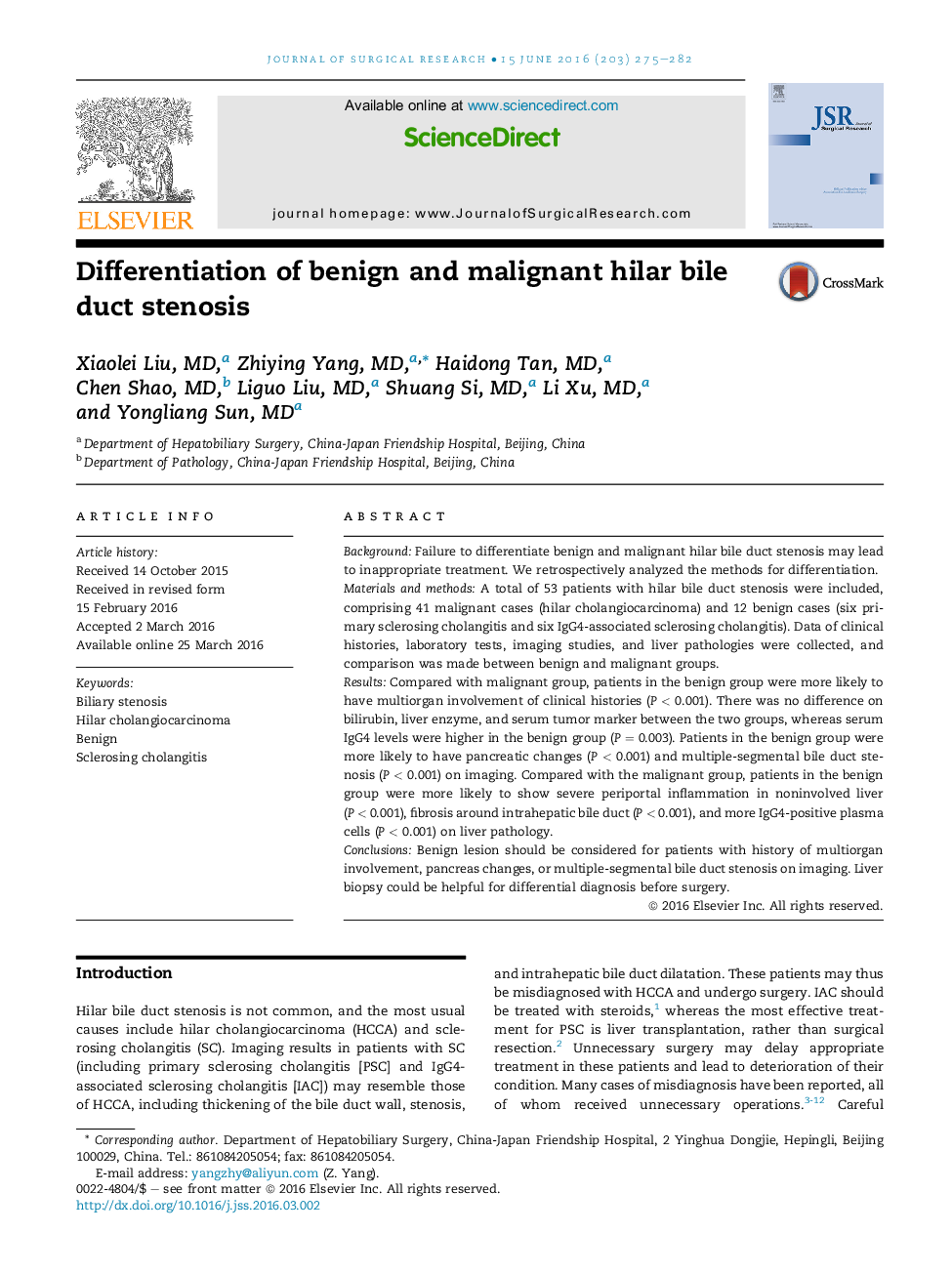| Article ID | Journal | Published Year | Pages | File Type |
|---|---|---|---|---|
| 4299264 | Journal of Surgical Research | 2016 | 8 Pages |
BackgroundFailure to differentiate benign and malignant hilar bile duct stenosis may lead to inappropriate treatment. We retrospectively analyzed the methods for differentiation.Materials and methodsA total of 53 patients with hilar bile duct stenosis were included, comprising 41 malignant cases (hilar cholangiocarcinoma) and 12 benign cases (six primary sclerosing cholangitis and six IgG4-associated sclerosing cholangitis). Data of clinical histories, laboratory tests, imaging studies, and liver pathologies were collected, and comparison was made between benign and malignant groups.ResultsCompared with malignant group, patients in the benign group were more likely to have multiorgan involvement of clinical histories (P < 0.001). There was no difference on bilirubin, liver enzyme, and serum tumor marker between the two groups, whereas serum IgG4 levels were higher in the benign group (P = 0.003). Patients in the benign group were more likely to have pancreatic changes (P < 0.001) and multiple-segmental bile duct stenosis (P < 0.001) on imaging. Compared with the malignant group, patients in the benign group were more likely to show severe periportal inflammation in noninvolved liver (P < 0.001), fibrosis around intrahepatic bile duct (P < 0.001), and more IgG4-positive plasma cells (P < 0.001) on liver pathology.ConclusionsBenign lesion should be considered for patients with history of multiorgan involvement, pancreas changes, or multiple-segmental bile duct stenosis on imaging. Liver biopsy could be helpful for differential diagnosis before surgery.
